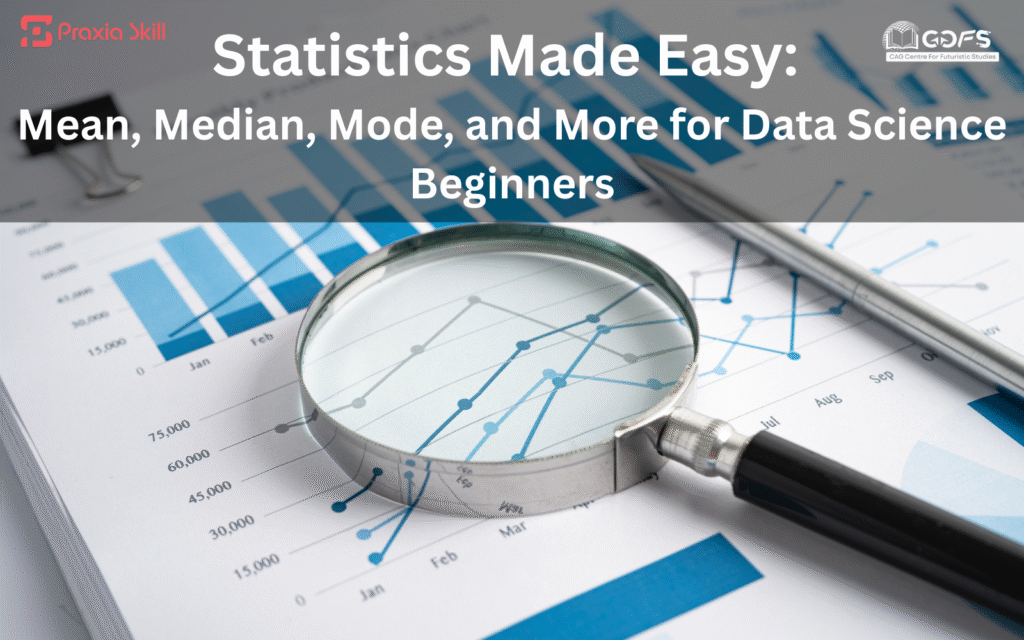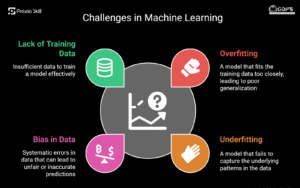Statistics is the backbone of data science. Without it, analyzing data would feel like trying to read a book in a language you don’t understand. Whether you’re just starting your journey into data science or simply refreshing your basics, understanding a few key statistical concepts can make things much clearer.
In this guide, we’ll walk through the most important topics every beginner should know: mean, median, mode, standard deviation, correlation, and probability basics.
Mean: The Average You Already Know
The mean is what most people think of as the “average.”
How it works:
Add up all the values and then divide by how many values there are.
Example:
If five students score: 70, 80, 90, 85, 75
Mean = (70 + 80 + 90 + 85 + 75) ÷ 5 = 80
Why it matters:
The mean gives a simple summary of data. For example, if you want to know how much time users spend on an app, the mean tells you the overall average.
Median: The Middle Value
The median is the middle number in a sorted list of values.
- If there’s an odd number of values, the middle one is the median.
- If there’s an even number, the median is the average of the two middle numbers.
Example:
Data: 10, 15, 20, 25, 30 → Median = 20
Data: 5, 10, 15, 20 → Median = (10 + 15) ÷ 2 = 12.5
Why it matters:
The median is useful when there are outliers (extreme values). If most students score around 80 but one student scores 0, the mean will be pulled down, but the median will still show the “typical” score more accurately.
Mode: The Most Frequent Value
The mode is the value that occurs most often.
Example:
Data: 2, 4, 4, 6, 7, 7, 7, 9 → Mode = 7
Why it matters:
The mode is helpful when working with categories or preferences, such as finding the most purchased product or the most common customer choice.
Standard Deviation: How Spread Out the Data Is
Standard deviation (often called SD) tells us how much the values differ from the mean.
- A low SD means the data is close to the average (less variation).
- A high SD means the data is spread out (more variation).
Example:
- Class A scores: 80, 82, 81, 79, 83 → Low SD (everyone scored similarly).
- Class B scores: 50, 60, 70, 90, 100 → High SD (scores vary a lot).
Why it matters:
Standard deviation is a measure of consistency. For instance, if a company promises “30-minute delivery,” a low SD means most orders are close to 30 minutes, while a high SD means delivery times are unpredictable.
Correlation: Do Two Things Move Together?
Correlation shows whether two things are related and how strong that relationship is.
- Positive correlation: As one goes up, the other also goes up (e.g., hours studied and exam scores).
- Negative correlation: As one goes up, the other goes down (e.g., product price and number of buyers).
- No correlation: No relationship (e.g., shoe size and intelligence).
Example:
- Height and weight → positive correlation.
- Age of a car and resale value → negative correlation.
- Coffee consumption and favourite colour → no correlation.
Why it matters:
Correlation helps in spotting patterns. But it’s important to remember that correlation does not mean causation. For example, ice cream sales and swimming accidents both rise in summer, but one doesn’t cause the other—it’s the season driving both.
Probability Basics: The Math of Chance
Probability is simply the chance of something happening.
Formula:
Number of favourable outcomes ÷ Total possible outcomes
Example:
Rolling a dice: Probability of getting a 4 = 1 ÷ 6 = 0.167 (about 17%).
Why it matters:
Probability is the basis of machine learning and predictions. From weather forecasts to predicting customer behaviour, probability helps us make informed guesses when outcomes are uncertain.
Wrapping Up
Statistics might sound complex, but once you break it down, it’s just a way of understanding data.
- Mean, median, and mode help summarize data.
- Standard deviation shows how spread out the data is.
- Correlation highlights relationships between variables.
- Probability helps us measure uncertainty.
Learning these basics is the first step toward deeper topics like hypothesis testing, regression, and machine learning. The more you practice with real datasets, the more natural these concepts will feel.
So, the next time you come across data, try applying these ideas—you’ll be surprised at how quickly patterns start to appear.



